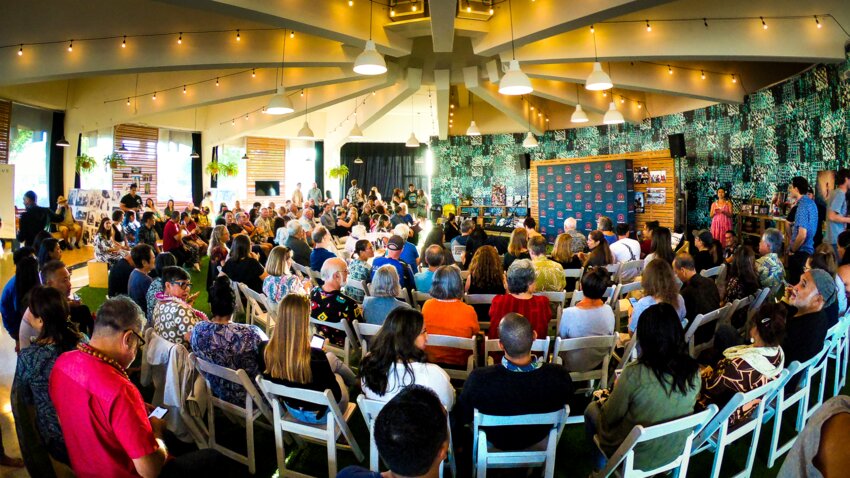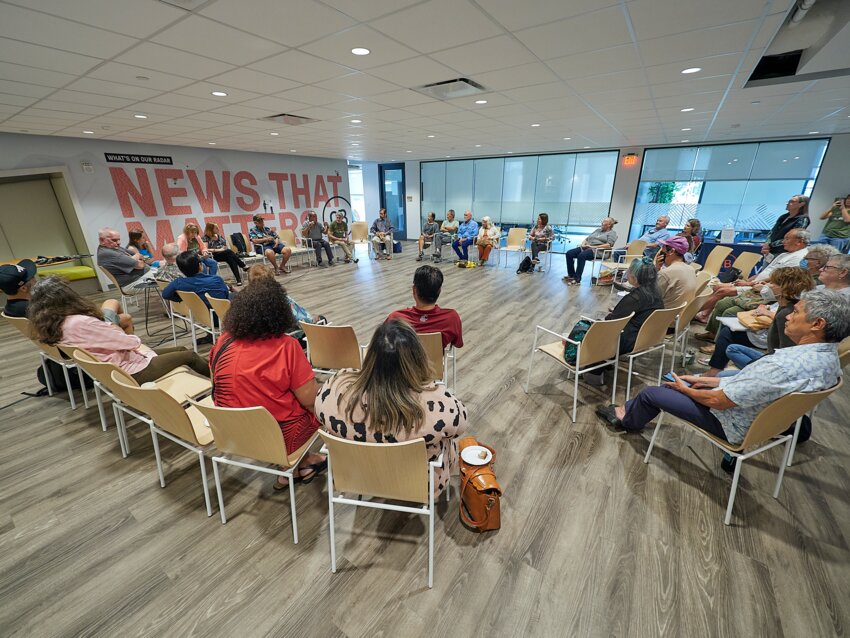Launched in 2010, Honolulu Civil Beat began as a for-profit news business, charging $19.99/month per subscription, but the model proved unsustainable. In 2016, they reorganized as a nonprofit and honed their editorial mission, publishing on several platforms: a website, newsletters and podcasts.
“We’ve grown into a community organization,” according to Patti Epler, editor and general manager. “Investigative, watchdog, deep-dive explanatory journalism are truly the heart and soul of Civil Beat. But we really see ourselves as a local news organization trying to help the community understand the important issues that are facing Hawaii. Our end goal is civic engagement.”
Ben Nishimoto joined Civil Beat in 2016 as vice president of operations and philanthropy.
“I’d been vice president of advancement at PBS Hawaii. … The opportunity to start a fundraising operation from scratch — moving from a legacy fundraising operation to something new — was really enticing,” he said.
Since 2016, the growing audience has changed.
“As we’ve added different beats — for example, adding an education reporter, adding a food-security and Hawaii-grown reporter, and looking more seriously at climate change and its immediate impacts here — we’ve brought in new audiences,” Nishimoto explained.
They’ve also grown geographically. “Part of that is because the news ecosystem around the neighboring islands is not doing very well at the moment. We’re trying to provide a backstop and fill those residents’ needs. It prompted us to add reporters on Maui, Kauai and the Big Island, which has led to more well-rounded, richer coverage,” he said.

Civil Beat hosts at least one weekly event, often about complex topics.
“We’ll do panel discussions, where we’ll get policymakers together, online or in person,” Epler said. “We’ve started doing pop-up newsrooms, where we take the staff out into the community and make ourselves available. People come and tell us what they think about important issues.”
They measure engagement a number of ways, looking at site visits, pageviews, social media follows, comments and feedback. They also track impact.
“We have an in-house impact tracker that’s basically an Excel spreadsheet on steroids, with different categories — so, something that inspires legislative change; if a bill was created; if someone gets hired or fired because of our coverage; if we win an award, allowing our mission to be amplified,” he said. There are also individual cases of impact, such as a reader who’s been inspired by their reporting to organize a beach cleanup.

They were integral in covering the wildfires that ravaged Lahaina in 2023 — a sweeping story without end. “It’s so overwhelming, the implications that’s had for the whole state,” Epler said.
Demonstrating impact is working.
In 2016, approximately 1,200 subscribers paid a discounted $4.99/month. “The vast majority of those subscribers stayed on as nonprofit donors,” Nishimoto reported. “Our average individual donor currently gives about $12/month, so it’s more than doubled. That’s incredible because it’s voluntary. People no longer have to give in order to access our content, but our message is that we believe our content should be free for everyone, regardless of their ability to pay, and those who could afford it actually gave more. On the individual donor side, we’ve increased the number from 1,200 to 7,500 today, which amounts to about $1.1 million in sustainable revenue.”
“We’re up to about 45 local and regional foundations that give us anywhere between $5,000 to $250,000,” he added. “Over the past two years, there’s been huge momentum around institutional giving to nonprofit news organizations throughout the country, so now we’re at the point where we have foundations coming to us who understand our value.”
 Gretchen A. Peck is a contributing editor to Editor & Publisher. She's reported for E&P since 2010 and welcomes comments at gretchenapeck@gmail.com.
Gretchen A. Peck is a contributing editor to Editor & Publisher. She's reported for E&P since 2010 and welcomes comments at gretchenapeck@gmail.com.
Comments
No comments on this item Please log in to comment by clicking here